Pubic Opinion of the PPACA
A recent Kaiser Poll shows favorable results for the PPACA the first time since 2012. 43% have a favorable view of the PPACA and 42% have an unfavorable view of it. While the report shows a favorable view, it is within the margin of error (+ or – 3%) and not statistically significant (Click on the graph[s] for a larger version).

Even though the Public’s View is split and slightly favoring the PPACA, the percentage of people who wish Congress to finish implementation or expand the PPACA is 46% as opposed to those wishing to repeal or scale it back at 41%. This opinion has remained consistent for six months of the Kaiser survey.
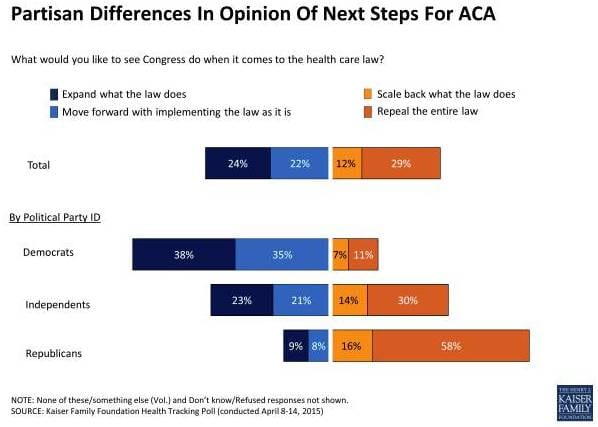
In how the PPACA is viewed plays mostly along partisan political lines with Democrats favoring it and Republicans opposing it. In total, it is an equal split favoring and opposing it.
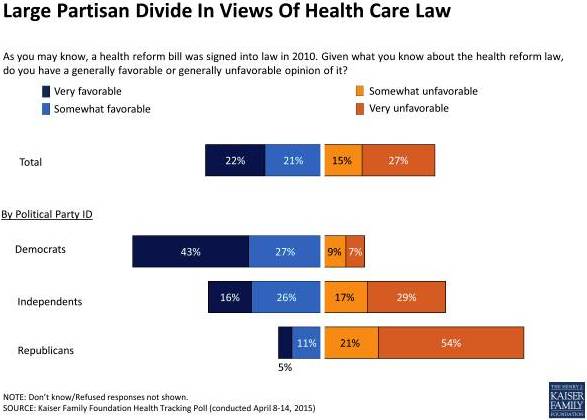
Does the PPACA hurt, help, or have a direct impact upon you. Again, this plays along the partisan political beliefs of the people with Democrats claiming it helped as opposed to the Republicans claiming it hurt. In all three cases and taking into consideration the politics of the people, the majority claimed the PPACA had “No Direct Impact” upon them.
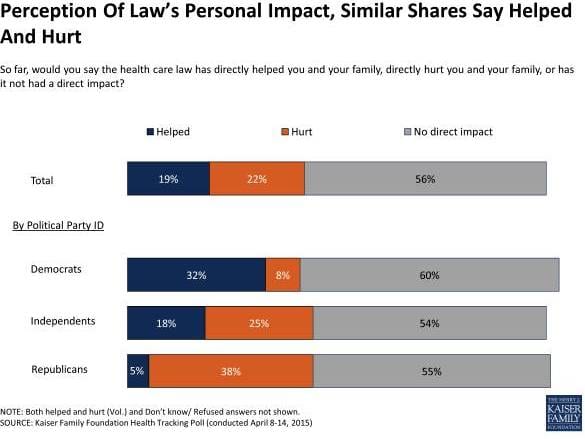
In March 2015, the CBO recalculated and revised the expected costs of the PPACA downward. This went largely unnoticed and few people realize the PPACA would cost less than expected. 50% still believe it would cost more and another 15% said the same as originally estimated.
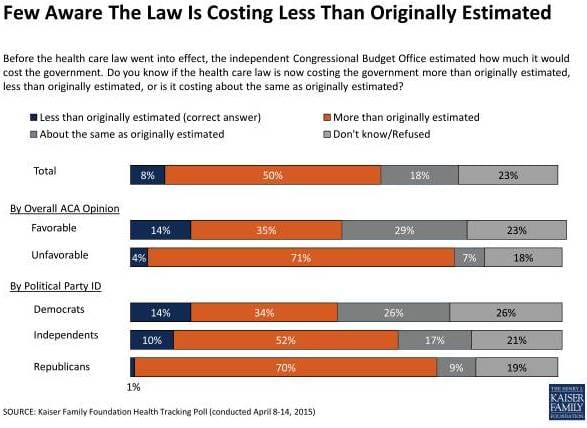
Interestingly enough is the agreement of the #1 priority for healthcare; all politics aside and by a super-majority, people want “drugs for chronic conditions to be affordable to those who need them. When looking at the Total picture, drug prices and hospital charges are other priorities people wish addressed.
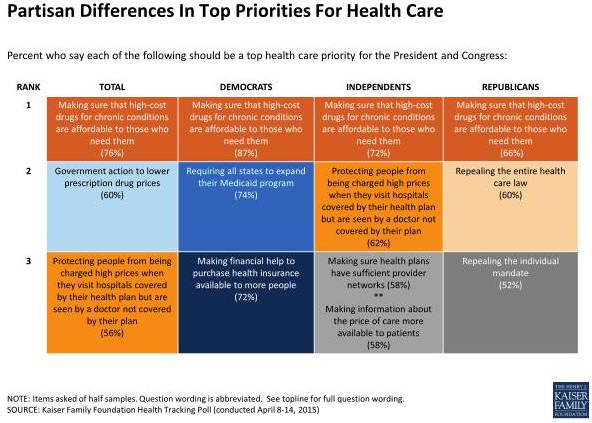
There is more to the Kaiser Survey which can be found here: Kaiser Health Tracking Poll: April 2015. Looking at Figure 6 of the survey, both Democrats and Republicans agree on making prescription drugs more affordable giving it the highest priority for Congress. Other priorities were making hospital costs more affordable and greater protections against out-of network doctors and associated costs; making sure provider networks were sufficiently large enough in the plans, and making information more readily available to patients about the price of doctors’ visits, procedures, and tests, such as hip replacements and MRIs.

Why is the law costing less than expected?
Is it because some states are basically opting out, or is it because costs per person are lower?
J:
Make your point as I do not feel like ferreting it out of you.
I know it is a waste of time, but I wonder what these numbers would look like if Obama was not black.
E:
Laying that comment out there will certainly attract a comment or two. Mostly I believe, it is the lies perpetuated by the right during and pre-PPACA as planned by the Republican party. They certainly have skewed the beliefs of their followers. Obama bears some of the fault too as he could have been more aggressive in support of the PPACA and the people advocating for it in the same manner he exhibits today for the TPP (which will hurt Labor and the Middle Class) and in calling out Senator Warren (who is entirely right). Instead he was silent and compromising which strengthened their resolve. Obama’s legacy should be us and not big business and a small percentage of the population who will benefit from the TPP
Run,
I certainly agree with your read on the TPP. At the same time, I do not understand how much would have changed if Obama had “been more aggressive in support of the PPACA and the people advocating for it in the same manner he exhibits today for the TPP”.
In both cases, the rhetoric digested by the public meant nothing. It is for the members of Congress. In the ACA runup, nothing he said could have changed one single vote. In the TPP thing, it might change some.
EMichael:
For me, it would be perception of what the man really stands for with regard to us. I see his actions today as a sell out. I think more could have been explained about the PPACA even though much of what he did say (keeping your plan) was skewed to mean something else. Anyhoo, we still have to get past June and SCOTUS. If they rule against, the bulk of the population is going to be angry at the Republicans pre-2016 election.